Samsung already announced that the Galaxy S24 series will be the “smartest AI phones ever” and it’s not just them – it just unveiled the Galaxy Book4 series of laptops that have a similar focus on AI. It’s not all about AI, though, the new series comes with better displays, faster charging and gobs of processing power. The Galaxy Book4 series features the new Intel Core Ultra 9, which bundles a fast CPU, a GPU and a new NPU in one package. There is also an Nvidia RTX 4070 (8GB) that can also take on AI duties – from image generation with Stable Diffusion to the usual DLSS for gaming. Alternatively, you can pick a Core Ultra 7 and an RTX 4050 (6GB) instead.
The new design features improved cooling
with an 11% wider vapor chamber and dual fans with uneven blade spacing. RAM
options range from 16GB to 64GB (LPDDR5X) and you can have 512GB, 1TB or 2TB SSDs
with an expansion slot available. The Book3 series was split between
touchscreen models with models without touch. There is no such distinction with
with Book4 series – all three model have touch-capable Dynamic AMOLED 2X
displays with the new Vision Booster and anti-reflective technology that
improve legibility outside in the sun.
The Samsung Galaxy Book4 Ultra is the top
of the line model and comes in a single size, 16”, with a 2,880 x 1,800px
display (16:10) with 48-120Hz variable refresh rate and 120% coverage of the
DCI-P3 color space. Samsung is touting both improved power efficiency and
faster charging – using the 140W adapter, it can bring the 76Wh battery to 55%
in just 30 minutes, which is 40% faster than the previous model.
The laptops are equipped with quad
speakers from AKG with Dolby Atmos support (2x 5W woofers and 2x 2W tweeters).
AI comes into play once again and offers noise cancellation for the dual
microphone array, which Samsung describes as “studio quality”. Also, if you
have a pair of Galaxy Buds2 Pro, you will be able to use the new Bluetooth LE
Audio standard for higher quality audio and reduced latency. Additional
wireless connectivity options include Wi-Fi 6E and Bluetooth 5.3.
All three Book4 laptops feature an HDMI
2.1 port (supports 8K @ 60fps, 5K @ 120fps), but there is another way to get
more screen real estate – the Second Screen feature allows you to turn a tablet
into a monitor with the usual Duplicate and Extend modes and now you can even
rotate the image. There are also a pair of Thunderbolt 4 ports and a USB Type A
port for those of you that still have such peripherals. The Samsung Galaxy Book4
Pro comes in 14” and 16” versions, which weigh 1.23kg and 1.56kg, respectively.
Both have 2,880 x 1,800px 48-120Hz displays with 120% DCI-P3, just like the
Ultra.
This one can be configured with an Intel
Core Ultra 7 or Ultra 5 CPU with Intel Arc graphics and 16/32GB of RAM, plus
256GB-1TB SSD (and an expansion slot). Note that the small model has a 63Wh
battery, the larger one 76Wh, both with 65W USB-C charging. There’s yet more AI
in here – the new Photo Remaster feature in the Samsung Gallery app for PC
allows for quick and easy touch ups and it can remove unwanted shadows and
reflections. The Samsung Studio app is a video editor that will be available
across Galaxy devices (and the projects will be automatically synced up so you
can continue work you started on your tablet on your laptop or vice versa).
Finally, the Samsung Galaxy Book4 Pro 360
comes only in 16” form and weighs 1.66kg. It has the same display as the other two,
except the hinges rotate 360° so it can turn into a Windows tablet. There is an
S Pen included in the box. The configuration options are basically the same
with Intel Core Ultra 7 and Ultra 5, 16/32GB of RAM and 512GB/1TB SSD (no
expansion slot on this one, however). It has the same connectivity options as
the Pro, including the 65W USB-C adapter for the 76Wh battery.
One last thing to mention is that the
Book4 laptops use a wider variety of recycled materials than previous
generations, this includes aluminum, glass and plastic. The new Samsung Galaxy
Book4 series will launch in South Korea first in January 2024 and will expand
to other markets afterwards, so stay tuned for pricing.





